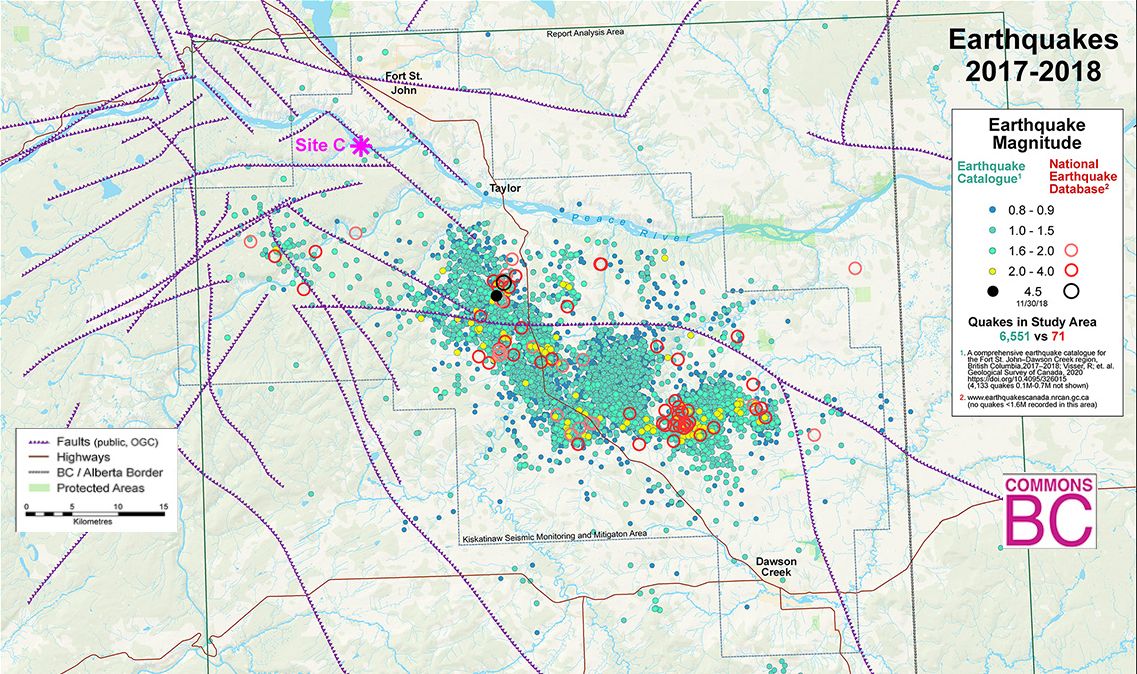The BC NDP’s decision to proceed with the Site C dam a few years ago was a slap in the face of every progressive climate policy that the party claimed to espouse. That was only the tip of the iceberg however, since not only was Site C an ideological betrayal, it did not make sense financially either. Back in 2017, $2 billion had already been spent on it. Currently over 24 million workhours and more than $5 billion has been invested towards excavation programs on the Peace River, with cancellation not considered to be an option by the government.
Back in 2017, the dam’s cost was listed as $10.7 billion, which included a $858-million contingency fund. Over 70% of this fund has already been used. Crucially, the Peace River needs to be diverted and routed through tunnels to allow for dam construction. BC Hydro has already missed the first deadline but claims that the one for September 2020 is on track to be met, despite claiming in July 2020 that the project’s budget and schedule is at significant risk. The COVID-19 pandemic has played a role in delays, with workers laid off; however, that is a weak excuse. Site C has been destined to fail from the first day and its core problems are ecological and geological.
While it is correct that dams have supplied years of low-cost energy to BC, they are an antiquated technology. The Site C dam would flood approximately 80 km of the Peace River Valley at a time when the costs of wind, solar and other renewable energy have declined, eradicating over 13,000 hectares of vital farmland and critical wildlife habitat, landing a potential fatal below to BC’s ecological well-being. On top of the environmental nightmare, Site C infringes on the treaty rights of First Nations, landing reconciliation another blow. Recently there was an agreement between the Prophet River First Nation, The Province and BC Hydro; however, this does not involve neighbouring First Nations and thus does not do them justice in any way whatsoever.
Then there is a technical problem, and it is a massive one – a geological risk on the south bank, that was warned about in advance. The area is full of faults and is being widely fracked for natural gas, which is known to cause earthquakes. There have been thousands of earthquakes; one in November 2018 was 4.6 in magnitude, powerful enough to shake Fort St John and force the evacuation of the Site C construction site. A strong earthquake would cause the bank to collapse into the reservoir and threaten the structures of the dam, and the Peace Canyon dam upstream.
This is on top of the instability on the river’s north bank, where tension cracks added to construction costs and delayed the river diversion by a year. The solution to these geotechnical problems is not quick, and requires additional scope and design enhancements to further strengthen the foundations of the structures, including the powerhouse, spillways and earth-fill dam. These solutions add extra time and cost to the project.
Not only does Site C create risks for BC, it doesn’t bode well for Canada internationally. It is in direct contrast to Canada’s stance on the Paris agreement. The farmland at risk of flooding is essential to reducing BC’s dependence on imported foods and substantially reducing the carbon fuels needed to transport those foods.
Site C is beginning to sound like Muskrat Falls hydroelectric project in Newfoundland and Labrador. This failed project, with massive cost overruns and environmental problems, threatens to bankrupt the province. While BC’s financial position is stronger, this could still devastate BC Hydro and hit users with huge hydro bill increases. The two projects share the causes of arrogant political leaders and a crown corporation hell bent on a hydro project with benefits overstated, risks understated, and the alternatives ignored.
What is ironic is that Site C is a failure even by capitalism’s own standards, with skyrocketing costs, and benefits nowhere to be seen; however, it still has not been shut down. Much like capitalism’s other crises, the ecological arguments are also being ignored. It is imperative that this project be scrapped to prevent the disaster it will unleash on the environment. We need to fight for a healthy planet, and this cannot be achieved under capitalism. The solution lies in the struggle for a Socialist World, which is very possible.




